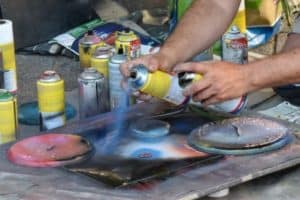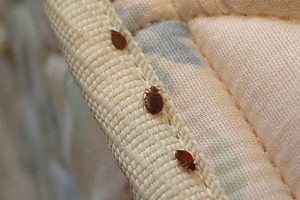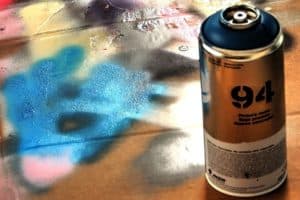What is a baby brown recluse spider? What does it look like? Is it dangerous?
A baby brown recluse spider is small and light-tan. It does not have a dark violin pattern on the head, which you will find in the mature brown recluse spiders. It has three pairs of two eyes, compared to most spiders with four sets. Plus, the legs are not spiny or banded. It is dangerous but not fatal.
Read on to learn more about baby brown recluse spiders, including their appearance, bite treatment, and the best ways to prevent their infestation.
What Is a Baby Brown Recluse Spider?

A brown recluse baby spider is one of the three species of recluse spiders. Its scientific name is Loxosceles reclusa. It has a medically significant venom, making it important to execute immediate treatment upon the first sign. Nonetheless, while it is venomous, the bite is seldom fatal. It often results in minor wounds and will heal shortly.
As the name implies, these are reclusive spiders. They prefer to live in isolation, especially once they are mature enough to separate from their mothers. Unless you disturb them, they won’t usually be a problem as they remain hiding.
What Does a Baby Brown Recluse Spider Look Like?
It is difficult to answer this question. Even experts have a hard time identifying this type of spider at first sight. In most cases, you have to look under the microscope to ensure that it is a baby brown recluse.
1. Six Eyes in Three Sets
One of the first things that you have to look at is the eyes. Other spiders will have eight eyes that appear in four pairs. Meanwhile, a baby brown recluse spider will have six eyes, appearing in three sets. There is one pair in the middle and two others on both sides, forming a slightly U shape.
2. Does Not Have Spines or Bands on Its Legs
A baby brown recluse does not have spines or bands on its legs. They are flexible and hairy. You will find short and fine hairs throughout its body. Although, most of these hairs will become more visible only once the spider grows older. Its legs are slanting as they do not have bones.
3. Their Legs and Abdomens Have Uniform Colors
Their legs and abdomens have uniform colors. If its legs have two or more colors, there is a high chance of a different kind of spider. If its abdomen has several pigments, then it isn’t a baby brown recluse.
4. Habits
Another good way to identify a baby brown recluse is its habits. It often stays near the mother. The female adult protects the young ones from predators while also feeding their offspring. As the baby spider grows, it searches for new hunting territories, eventually leaving its mother behind.
5. Violin-shaped Mark on the Back
More so, a brown recluse has a violin-shaped mark on the back. The color is slightly darker than the rest of the body. However, this is a physical characteristic that only appears upon maturity. This means that it won’t show up when they are babies.
If the spider is more black than brown, see our article on baby black widow spiders to see if it is a baby black widow instead of a baby brown recluse.
Where Do Baby Brown Recluse Spiders Live?
1. Outdoors-Trash, Woodpiles, etc.
You will find these spiders both indoors and outdoors. In the wild, they prefer dark areas as they are nocturnal. You will find them hiding under piles of trash, woodpiles, logs, and rocks. They love areas where there are no disturbances since they are shy. The more movements there are in a specific location, the less likely they are present.
2. Indoors-Cabinets, Attics, etc.
They also live with humans indoors, but they choose areas where they are left alone. They thrive in cabinets, attics, basements, cellars, and crawl spaces. You can also find them under cardboards, which they prefer because they resemble decaying tree bark.
A good way to identify their presence is to look for irregular webs. Their webs have grey or off-white sticky threads. They are hiding during the day when they spend most of their time building webs. At night, they leave their webs and hunt. Male spiders move more while females stay near the webs.
The main mode of movement of these spiders is hitchhiking. They get around by hiding in things that move, such as bags and boxes. Even when they are hiding for a long time, they will survive. These spiders adapt well to hot and dry environments. Plus, they can survive for months without food.
3. They Are Not Found All Over the Country
It is also important to note that these spiders are not found all over the country. They are most common in the Midwest, South, and West. If you are not from these regions in the United States, there is a low chance that baby brown recluse spiders are present. Specifically, you will find them in the following states:
- Alabama
- Arkansas
- Georgia
- Illinois
- Indiana
- Iowa
- Kansas
- Kentucky
- Louisiana
- Mississippi
- Missouri
- Nebraska
- Ohio
- Oklahoma
- Tennessee
- Texas
Baby Brown Recluse Spider Bites

In most instances, your body will not have a severe reaction when a baby recluse spider bites. They will bite only when they press against the skin, such as in clothes or towels. The bites can be painful, but this will depend on your sensitivity. People will have different reactions, but 90% of the time, it heals without scars or needing medical attention.
Is a Brown Recluse Baby Spider Bite Dangerous?
Baby brown recluse spiders are venomous, so immediate medical attention is necessary, especially amongst the vulnerable, including children and the elderly. However, like many spiders, they will bite only if you disturb them or their habitat. Left on their own, they will not harm humans. Also, their bites are not fatal but can make you ill.
The venom of this spider has complex enzymes, although they become more dangerous upon maturity than when they are young. These enzymes can result in hemolysis. It is a condition that ruptures the blood cells. After rupturing, the cells leak.
Signs to Watch Out for If You Get Bitten
1. Red, Tender, and Swollen Bite
One of the problems with baby brown recluse bites is that they are not instantly apparent. Most of the time, they are painless. It takes three to eight hours before the first signs appear. The symptoms include red, tender, and swollen parts. They are often localized on the area of the bite. The problem will not spread to the rest of the body.
2. Necrotic Lesions
Necrotic lesions appear if the bite is serious. It is a sinking and dry blue skin patch, pale in the middle and has irregular sides. A blister might also be present in the center. While the venom gets deeper into the tissues, the wound becomes larger over days or weeks. It can stay for months and will leave a highly noticeable mark.
3. Dizziness, Vomiting, Rashes, Itching, Discomfort, and Fever
Systemic reactions are also possible but uncommon. It often comes with dizziness, vomiting, rashes, itching, discomfort, and fever. The reactions are more severe amongst children and the elderly. It is also more common in those with a poor immune system.
Most bites will heal within three weeks to three months. If it hasn’t, then the bite might not be from a baby brown recluse. It can be from other, more poisonous spiders.
Misdiagnosis of brown recluse bites is common. Some of the often mistaken conditions include syphilis, herpes, chemical burns, fungal infections, diabetic ulcers, localized vasculitis, and Lyme disease.
Drug-resistant staph infection is also often misdiagnosed as a brown recluse bite. The bacterium creates skin lesions that can be extremely painful.
When a Bite Isn’t from a Baby Brown Recluse
If the following signs and symptoms are present, the bite is possibly from other kinds of poisonous spiders:
- The bites are numerous. A brown recluse will bite only once in a specific area of the body.
- They are active only from April to October. If the bite happens outside those months, it is likely from another spider.
- It is elevated. Baby brown recluse bites are flat.
- The wound does not heal within three months. Their bites are not chronic and will heal shortly.
- It is bigger than five inches.
First Aid Treatment for a Baby Brown Recluse Bite

If you or anyone you know has been bitten by a baby brown recluse, below are some of the most important things to do:
- Clean the area immediately after the bite. Wash it off with mild soap and water.
- Once the wound is clean, apply a cold compress or put ice in the bite for at least ten minutes. Wash again if necessary.
- Apply a topical cream or antibiotic to prevent the infection from spreading. Make sure that you do it with a clean hand.
- If it hurts, drink a pain reliever immediately. Take an antihistamine if it is itchy or if you develop other allergic reactions.
- When over-the-counter creams and medications are unavailable, try natural remedies to inhibit adverse reactions. The right essential oils reduce pain and inflammation.
- Before drinking any medicine or putting on any ointment, make sure that you have no allergies to them. Otherwise, the problem will worsen.
- If the bite is on the arm or leg, raise it while you are resting. This is a good way to prevent swelling.
- Call emergency services for immediate assistance. If you can, go to the nearest hospital. If possible, bring the spider so that the doctor or competent personnel can identify the cause of the bite.
Prevention Is Better than Cure
The best line of defense against baby brown recluse bites is prevention. Here are some of the best things to do to become more proactive:
- Whether indoors or outdoors, get rid of clutter. Remove anything unnecessary where spiders can find dark places to hide.
- If you are out in the wild, such as hiking, wear breathable pants and long sleeves. This will prevent the spider from biting you.
- Before using clothes, blankets, sheets, and similar items, give them a vigorous shake. This is especially helpful if they have been stuck in the cabinets for a long time.
- For long-term storage of household items, keep them in tight containers. This way, spiders cannot enter.
- Regular inspection of cracks and crevices is a must. It also helps to spray insecticides to prevent spiders from wreaking havoc.
- Work with pest control companies. They have experts who can help locate potential hiding spots and control the population of baby brown recluse spiders.
- Use glue traps. Position them near dark areas, crevices, and other places where these spiders are hiding. Avoid using a trap with an elevated perimeter.
- Take out your trash regularly. The longer they stay in dark places and with possible entrances, the higher is the chance that there will be baby brown recluse spiders.
- Have a first-aid kit ready at home. It must have pain medication, antihistamines, topical antibiotics, and other common items you will need for spider bite treatment.
- If you see a baby brown recluse spider, do not disturb it. They are shy, so they won’t be aggressive unless you hurt them.
Conclusion – Brown Recluse Baby Spider
A baby brown recluse is a small spider with a pair of three eyes. It has a fine and hairy body with flexible and slanting legs. Upon maturity, they grow a violin-shaped mark on their abdomen with a slightly darker color than the rest of its body. It is often hard to identify without a magnifying glass or microscope.
It is dangerous but not fatal. Bites are more serious amongst children, the elderly, and those who are unhealthy. Healthy adults are less likely to develop severe reactions. In case of a bite, however, do not be complacent. Perform first aid treatment as soon as possible and seek medical help when available.
Read next:
What Are the Tiny Black Bugs in Bathroom and How to Get Rid of Them?


![Too Much Makeup - How Much Is Too Much? [With Example Pictures] too much makeup](https://howchimp.com/wp-content/uploads/2021/04/too-much-makeup-300x200.jpg)


